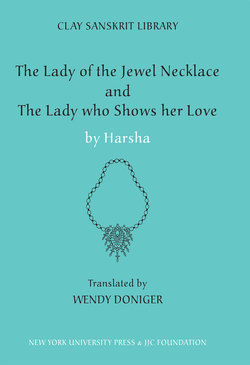Читать книгу The Lady of the Jewel Necklace & The Lady who Shows her Love - Harsha - Страница 20
На сайте Литреса книга снята с продажи.
Оглавлениеbitter sarcasm: “Bravo, Prime Minister Vasantaka, bravo! You have surpassed even Prime Minister Yaugandharayana with this plot for war and peace.” The jester’s playful erotic machinations are a direct parallel to the serious political schemes of the real Prime Minister. The jester is the shadow not of the king but of the Machiavellian minister.
A final clue, I think, to the royal nature of the poet lies in the amazing final stanza of both plays, in which Harsha speaks so bitterly about slanderers, a rasa-sentiment of ressentiment coming out of nowhere. What could the slander be? Is it, perhaps, the rumor that the king did not write the plays himself?
History of the Plot
A complex cycle of classical Sanskrit texts surrounds the mythical figures of king Udayana, his queen, Vasava·datta, and a series of co-wives (Doniger 1999: 74–84). A version of the story was also told in Pali in the Dhamma/pad’/attha/ katha, in the fifth century ce. Three episodes are told in the ‘Ocean of the Rivers of Story’ (Katha/sarit/sagara), a text probably composed in the eleventh or twelfth century in Kashmir but based on a much earlier collection of stories, the no longer extant ‘Great Story’ (Brhat/katha), which was almost certainly known to all of the Sanskrit playwrights. One of these three episodes tells of a celestial magician who disguised himself as Udayana and seduced a woman whom Udayana had intended to take as his co-wife [text 1, ‘Ocean of the Rivers of Story’ (31), in which the co-wife is Kalinga·sena]; another tells us that Queen Vasava·datta magically disguised herself and served the woman whom the king ______
